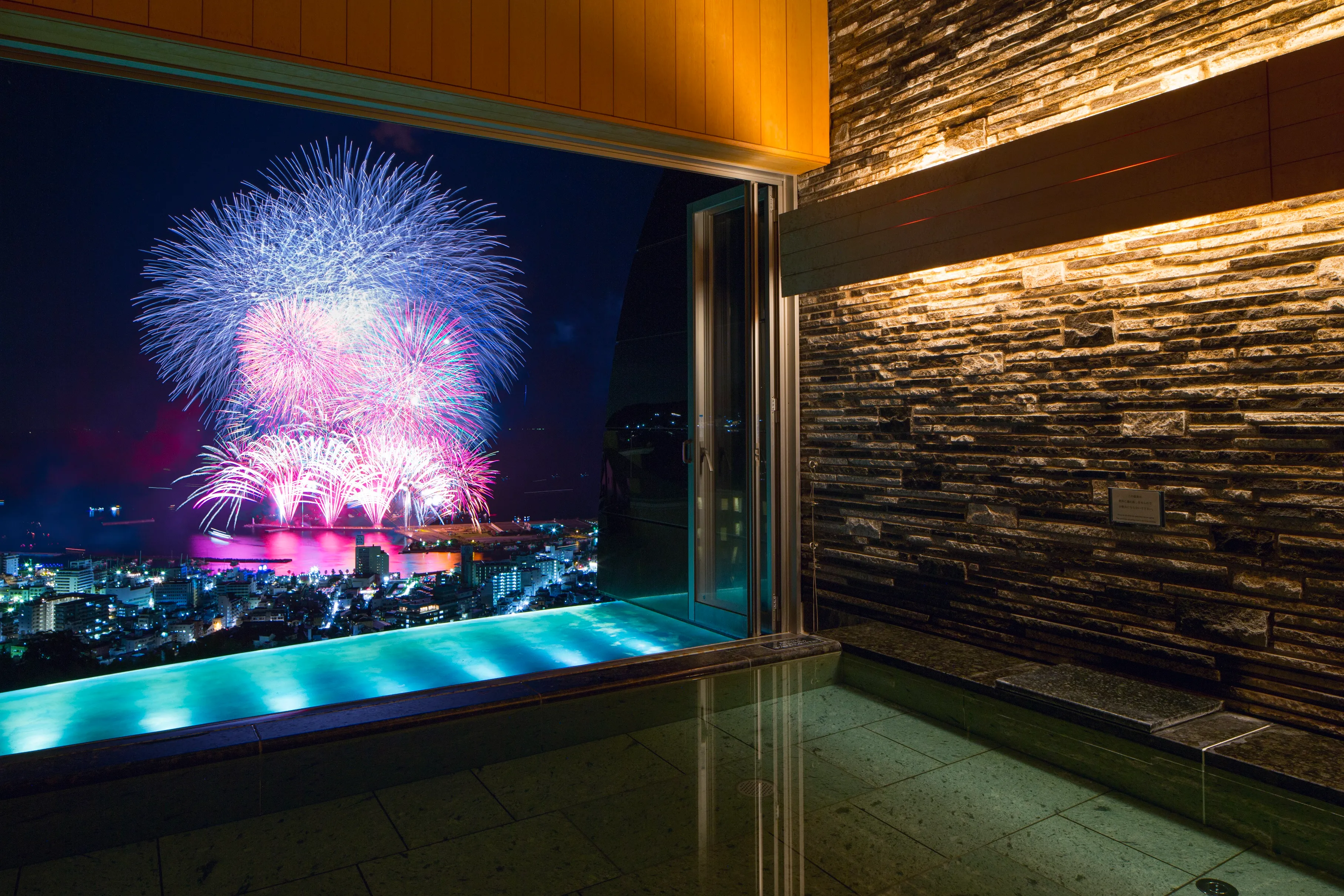
Hoshino Resorts RISONARE Atami
Atami Onsen
Shizuoka
Magic Time Stay adorned by the colors of the sky, sea, and forest.
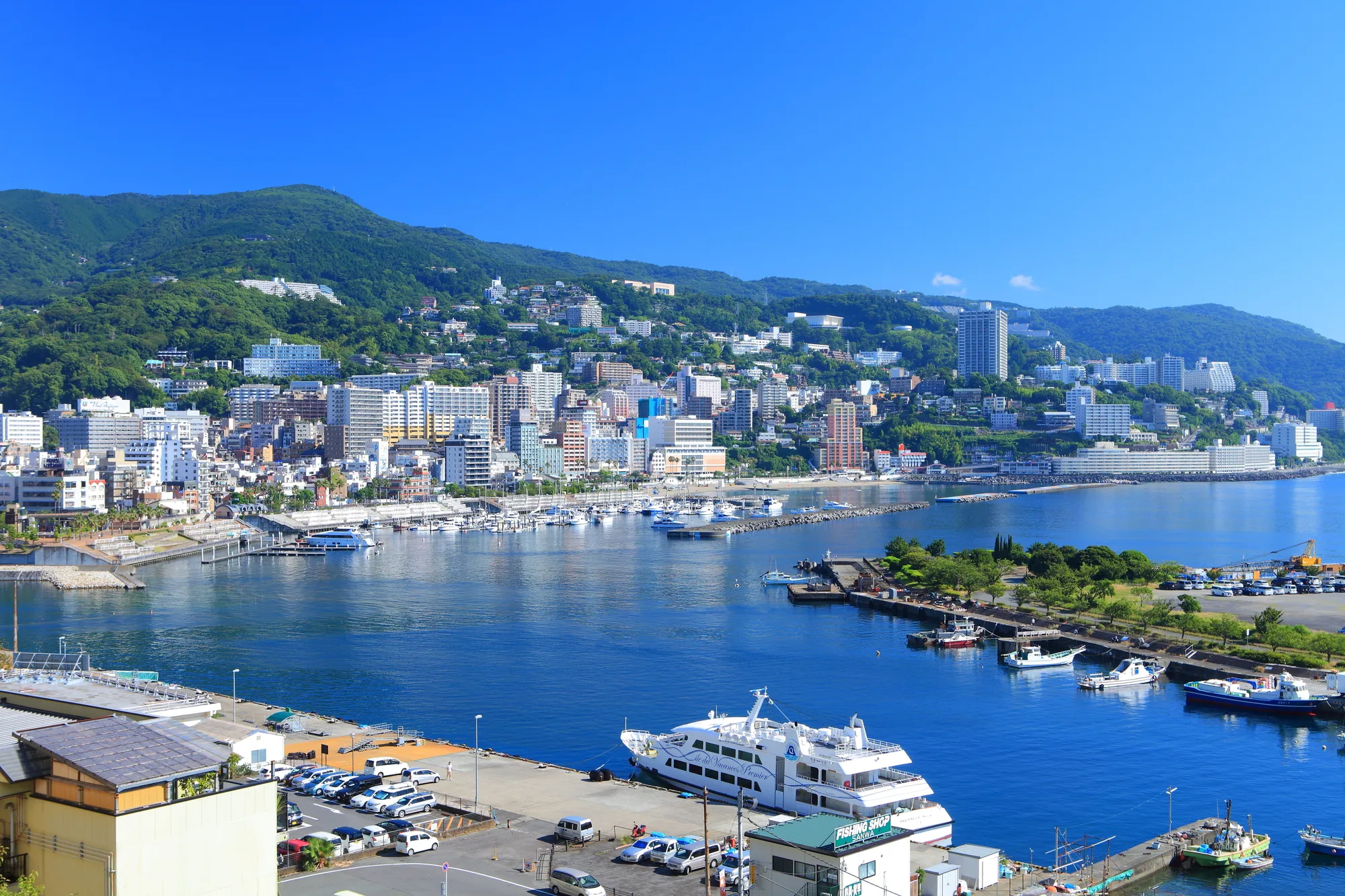
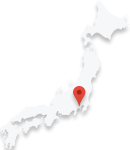
Atami Onsen is located at the easternmost tip of Shizuoka Prefecture, at the base of the Izu Peninsula, and is one of Japan's leading Onsen resorts facing Sagami Bay.
Atami Station also has a Shinkansen stop, and due to its easy access from the city, it is a popular place not only as a Onsen resort but also as a resort and villa area.
It has a long history, and the opening of Onsen dates back to the Nara period. The state of Atami's medicinal baths is also described in the Izu Fudoki of 713, and it continued to heal people in Kamakura, Edo, and Meiji, and gradually its name became known throughout Japan, and expanded to the current Onsen resort area.
Above all, the total amount of hot springs is 16,600 liters per minute, of which 90% are high hot springs with a temperature of 42 degrees Celsius or higher, with an average temperature of about 63 degrees. It is one of the most expensive Onsen resorts in Japan, with a total of more than 600 hot springs, and its efficacy has attracted people.
The fact that it faces Sagami Bay and is comfortable in a warm climate seems to be one of the factors for the development of the resort area, and since many people have visited it for a long time, the shopping street in Atami is a mixture of shops with tasteful retro stores and modern and fashionable shops, and you can enjoy walking around the city along with the Onsens.
Of course, there are also long-established inns with heavy gates and baptized hotels, so you can choose various types of ways to spend your time.
You can enjoy gourmet food using abundant mountain foods and fresh seafood caught from Sagami Bay, traditional crafts and traditional culture, and even the night view, making Atami a place that can be said to be a major Onsen leisure city.

Atami Onsen can be roughly divided into three areas.
The first is the central area of Atami Onsen around Atami Station.
Accommodation facilities, resort condominiums, restaurants, and tourist facilities are lined up around Atami Bay, and people gather on the beach in the summer, creating a gorgeous downtown area.
The beautiful night view born from the bustle of the city is also a tourist attraction.
The Atami area has a long history. It has been loved by many people since it was opened about 1,300 years ago, but there are many hot springs in this Atami area, even though it is in the town, and the total amount of water flowing in one day accounts for a considerable proportion of the total amount of hot springs in Atami Onsen.
The Izusan area is a Onsen town scattered around Mt. Izu in the northern part of Atami City.
It has been popular with many people as a Onsen resort at Izusan Shrine, which has been worshipped as a sacred place since ancient times.
There are 114 hot springs in the area, boasting an abundant amount of hot water. One of them is the "running hot spring," which is counted as one of the three major ancient springs in Japan and is a rare side-hole type source in Japan, and the water of about 70 degrees Celsius continues to boil about 170 liters per minute.
It is also possible to visit the "running hot spring", and it has become a popular tourist spot along with Izuyama Shrine, which is popular as a power spot for matchmaking, and ancient temples scattered around the area.
It is known that Minamoto Yoritomo and Hojo Masako visited in the Kamakura period, and later Bandō warriors such as Hojo Sakumo, and in the Edo period, Tokugawa Ieyasu and Furuta Oribe visited, making it an area where you can spend a relaxing time while feeling the history.
There are many Onsen accommodation facilities located on a little higher ground than the Atami area, so you can enjoy a different scenery from the Atami area.
It is a Onsen town scattered around the rich fishing port in the southern part of Atami City.
This area has long flourished as a natural fishing port on the east coast of Izu, and in the Edo period, it developed into a rich fishing port that was said to be "Edo Amishiro in Kyoto-Osaka".
From the areas of Kyushu, Shikoku, Osaka, Sakai, and Nagoya, large sailing ships such as Sengoku, medium-sized sailing vessels, and small pushers entered the port of Ajiro.
The average temperature of the hot spring in such a port town is about 78 degrees Celsius, and the average flow volume is about 207 liters per minute, which is the top in Atami.
In the immediate vicinity of the fishing port, there are about 30 dried fish shops and fish markets that sell various types of marine products, such as horse mackerel and squid.
The neighboring Taga Bay is a seaside area surrounded by mountains of citrus specialties such as daidai, and the beach is also popular in summer. There are many homely accommodations, and it is an area where you can spend a relaxing time in a blessed climate.
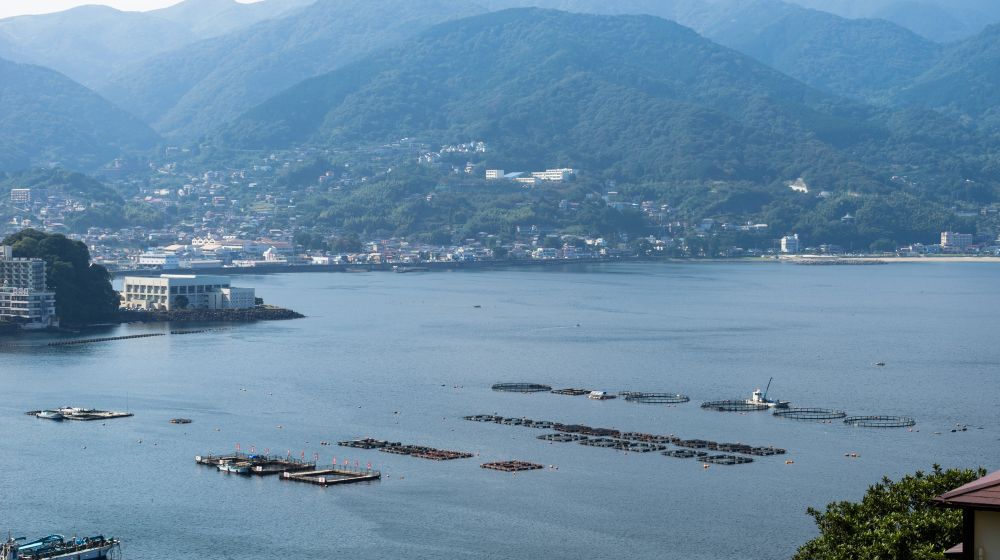
<Shinkansen/Train>
Tokyo (JR Tokaido Shinkansen Kodama) → Atami (about 40 minutes)
<Shinkansen/Train>
Tokyo (Tokaido Line)→ Atami (about 1 hour 45 minutes)
<Car>
Tokyo → Atami (about 1 hour 50 minutes)
<Shinkansen/Train>
Nagoya (JR Tokaido Shinkansen Kodama)→ Atami (about 1 hour 50 minutes)
<Car>
Nagoya→ Atami (about 3 hours 30 minutes)
<Shinkansen/Train>
Shin-Osaka(JR Tokaido Shinkansen Kodama)→ Nagoya(JR Tokaido Shinkansen Kodama)→ Atami (about 2 hours 50 minutes)
The quality of the springs is of chloride springs, sodium chloride strong salt springs, sodium and calcium chloride springs, sodium chloride springs, sodium and calcium chloride strong salt springs, calcium chloride springs, sodium chloride sulfate springs.
Sulfate springs of the species Calcium Sulfate Springs, Sodium Calcium Sulfate Springs, Sodium Calcium Sulfate Springs and Chloride Springs.
There are simple hot springs and alkaline simple hot springs.
In general, it is said to be effective for dermatitis, skin-beautifying effect, bronchitis, arteriosclerosis, neuralgia, low back pain, muscle pain, joint pain, frozen shoulder, motor paralysis, joint stiffness, bruises, sprains, chronic digestive diseases, hemorrhoids, sensitivity to cold, recovery from illness, recovery from fatigue, health promotion, cuts, burns, chronic skin diseases, frail children, chronic gynecological diseases, high blood pressure, anemia, rheumatism, etc.
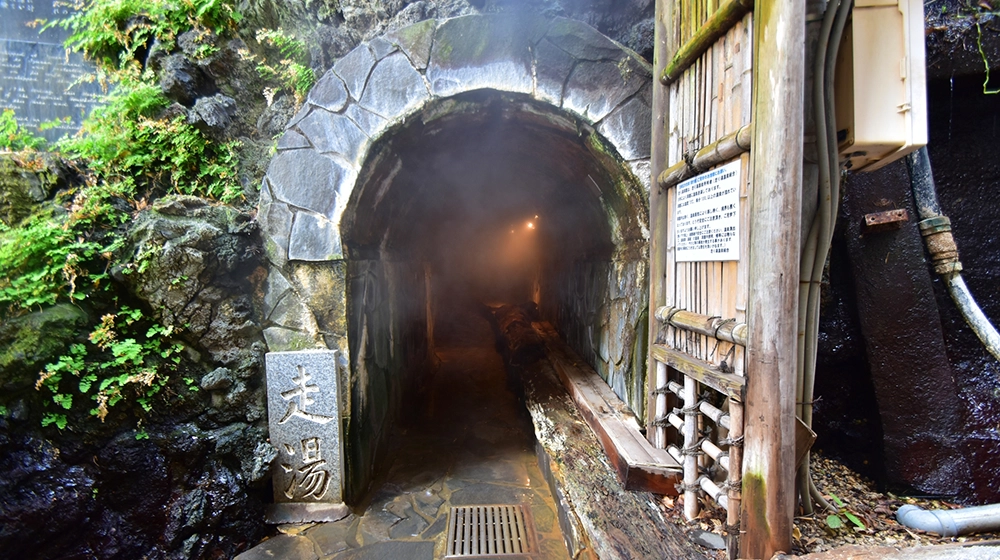
It is a colorless and transparent hot spring with a salty taste.
The salt prevents sweat from evaporating on the skin, so it is warm forever, and because it has a high heat retention effect, it is difficult to cool down and is also called "hot water". It is said to be effective for neuralgia, back pain, cold sensitivity, etc., so it is said to be effective for women's diseases.
It is colorless, transparent, and odorless, but it has a slightly salty taste due to its high sodium content.
It is said to have a sedative effect that lowers blood pressure and relieves pain. Therefore, it can be expected to be effective for hypertension, arteriosclerosis symptoms, trauma, etc., and constipation, obesity, diabetes, gout, etc. because it actively motilizes the intestines.
It is colorless and transparent, tasteless and odorless, and has general efficacy. In the case of alkaline, it is sometimes highly sedative, effective against high blood pressure and skin diseases, and is expected to have a high skin-beautifying effect.
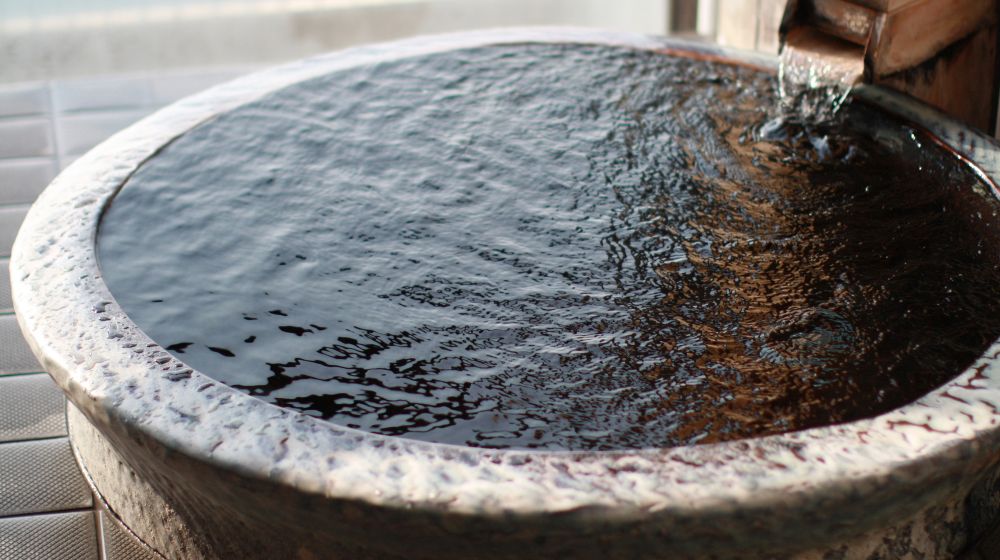
It is said that about 1,300 years ago, the Manmaki Kamijin of Hakone Gongen led the Onsen to the middle of Atami and built a shrine (now Yuzen Shrine) in order to help people who were in trouble due to damage such as fish dying due to the hot water gushing out of the sea.
The source that led to it is said to be the current "Oyuma Spring", and it is said that the general public later began to use it as a Onsen.
At that time, volcanic activity was more active than now, and it is speculated that it was like a "hot sea" as the name suggests.
It is said that the name Atami in this area was named after a neighbor saw fish die from boiling water gushing out of the sea 1,500 years ago.
The abundant amount of hot water and the quality of the springs were loved by many celebrities, and in the Kamakura period, Minamoto Yoritomo, Hojo Masako, and other Bandō warriors. During the Sengoku period, he healed the hearts and wounds of Hojo Sakumo and his vassals, and in the Edo period, he was loved by the Tokugawa family, including Tokugawa Ieyasu.
Tokugawa Ieyasu, who made this area his headquarters, seems to have liked it very much and made use of it, and there are many records of his stay in Atami and the fact that he brought his sons. From the time of the 4th Shogun Ietsuna, it seems that Edo Castle was presented as "Okumiyu".
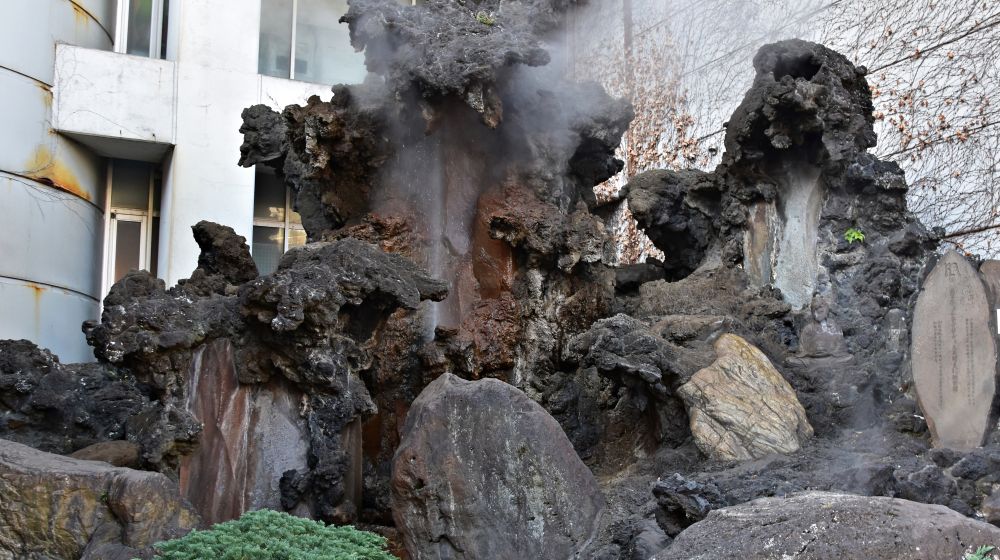
Since the beginning of the Meiji era, the first Onsen recreation center in Japan, "噏滊舘", was built, and the imperial residence was also built, and it has received many guests from Japan and abroad, further gaining popularity as a Onsen resort.
The combination of abundant nature, a blessed climate, and abundant food products has led to the development of a villa area as many business circles, governments, and literati visit the area, and many of their villas are built.
In addition, artists who loved this place will appear in their works, and the name recognition will increase even more.
With the subsequent opening of the Shinkansen and other enhancements of the transportation network, it became crowded with even more people, and it has developed into today's major Onsen leisure city and continues to expand.

Atami Onsen
Shizuoka
Magic Time Stay adorned by the colors of the sky, sea, and forest.
.jpg)
Atami Onsen
Shizuoka
All 350 rooms with ocean views, experience a spectacular view at a marine resort
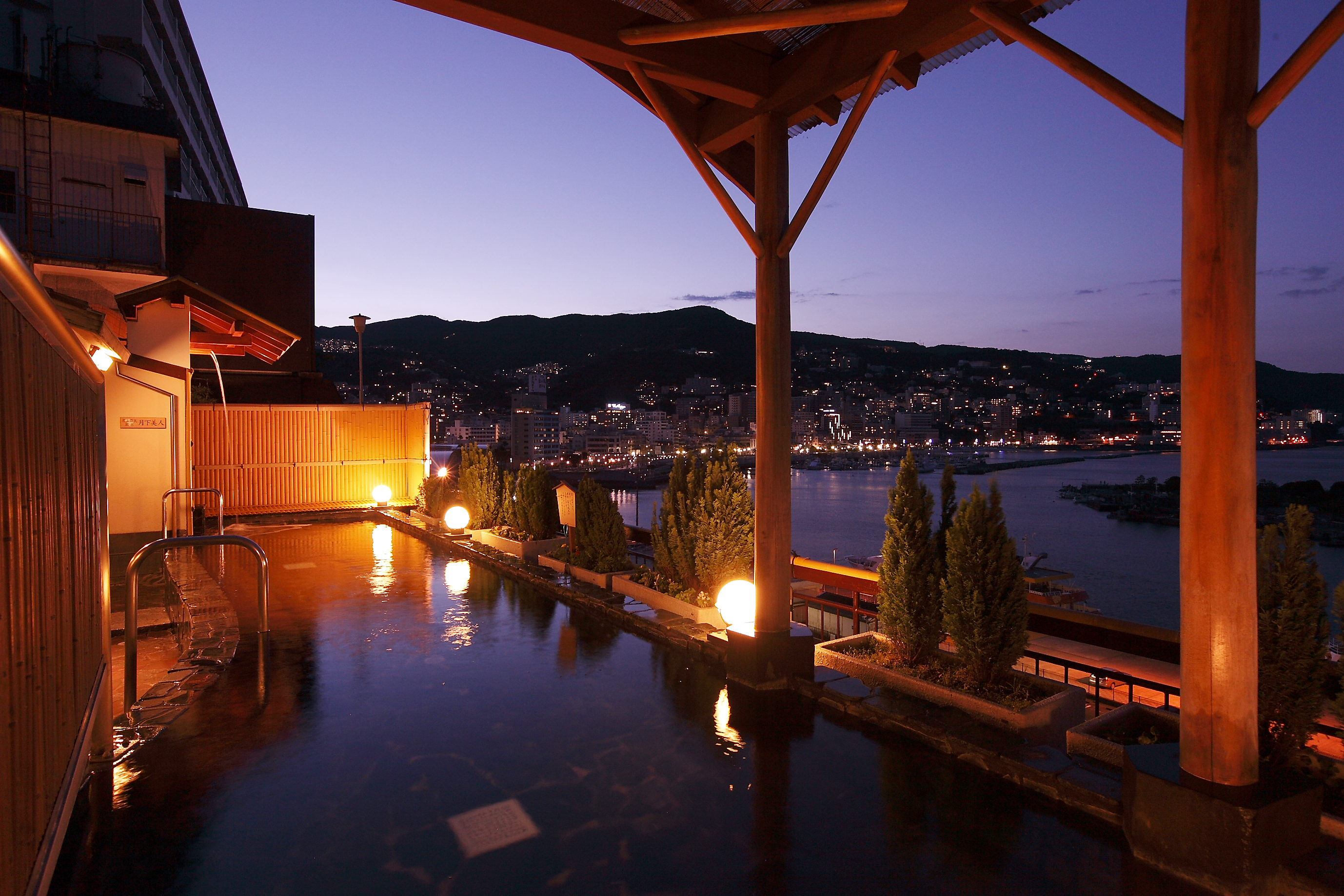
Atami Onsen
Shizuoka
THE ryokan style that is particular about Atami's cuisine and customer service
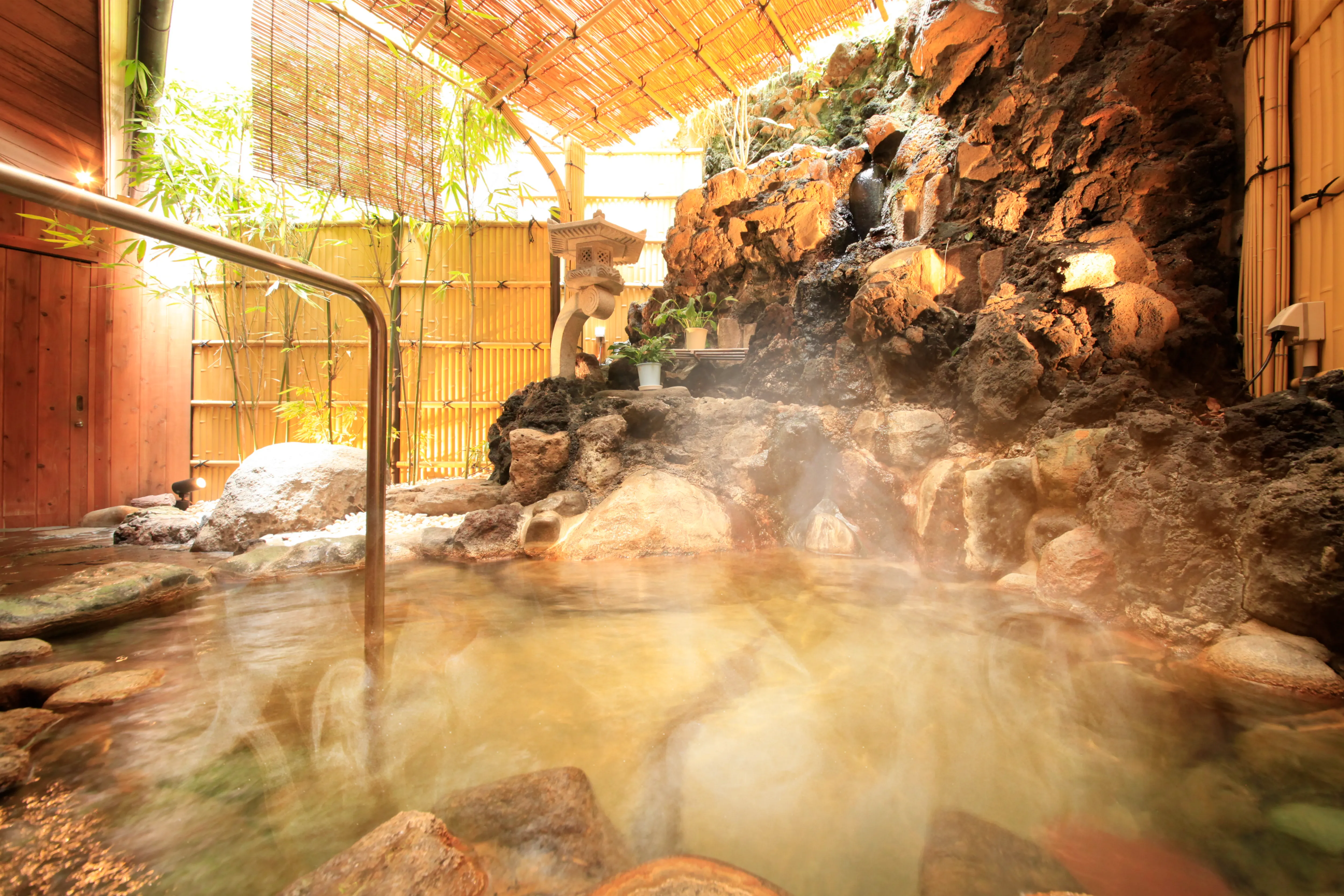
Atami Onsen
Shizuoka
The ryokan style inn that is particular about Atami's cuisine and customer service